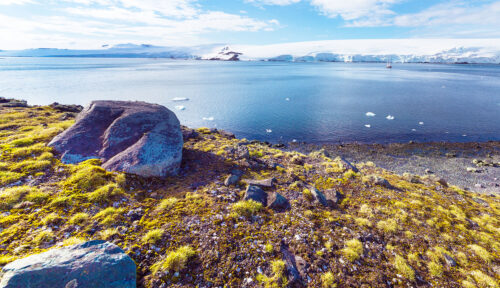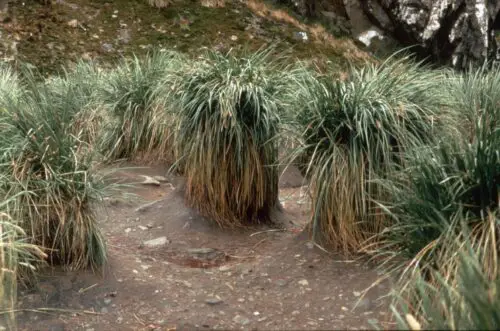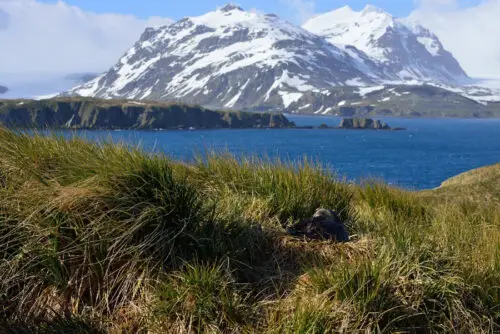In Antarctica, plants grow mostly on its coastal regions due to milder climate conditions and sun exposure. The harsh cold and limited sunlight make it challenging for plants to thrive across the continent.
However, some mosses, lichens, and algae can still be found in certain parts of Antarctica, particularly along the coastline where temperatures are relatively warmer. These plants have adapted to survive in extreme conditions by growing close to the ground and relying on specialized mechanisms to absorb nutrients and moisture from the environment.
Despite the hostile environment, these resilient plant species play a crucial role in the Antarctic ecosystem, providing food and habitat for various organisms in this icy continent.

Credit: www.earth.com
Extreme Plant Life In Antarctica
Surviving The Harsh Conditions
Plant life in Antarctica has evolved incredible strategies to withstand the extreme conditions of the continent. With temperatures plummeting well below freezing and long periods of darkness, it’s a harsh environment for any form of life.
However, despite these challenges, there are a few places where plants can grow and thrive. The most favorable spots for plant growth in Antarctica include the ice-free areas, where sunlight, water, and soil are available.
Unique Adaptations
Antarctic plants have developed unique adaptations to cope with the extreme environment. One remarkable adaptation is their ability to harness the limited sunlight they receive, using it efficiently for photosynthesis.
Additionally, many plants in Antarctica have developed small, compact structures to minimize exposure to the cold winds and conserve water. Some species also produce natural antifreeze compounds to survive the freezing temperatures.
Interestingly, many plants in Antarctica are not native to the continent. They have been introduced by humans and have managed to take root in this unforgiving environment.

Credit: www.bas.ac.uk
Coastal Areas And Islands
Coastal Areas and Islands in Antarctica are unique ecosystems where plant life thrives despite harsh conditions.
Mosses And Lichens
Mosses and lichens are the primary plant species found in coastal areas and islands of Antarctica.
- Mosses are small, non-vascular plants that can tolerate extreme cold and low light levels.
- Lichens are symbiotic organisms composed of fungi and algae, able to survive in challenging environments.
Algae And Cyanobacteria
Algae and cyanobacteria are also prevalent in the coastal regions and islands of Antarctica.
- Algae are simple plants that can photosynthesize in icy waters, providing food for marine animals.
- Cyanobacteria are ancient bacteria capable of photosynthesis, contributing to the ecosystem’s nutrient cycles.
Ice-free Areas
Antarctica may seem like a barren icy land, but there are surprising ice-free areas where plants thrive.
Protected Nooks And Crannies
Protected nooks and crannies in Antarctica provide shelter from harsh elements for plant growth.
Cushion Plants
Cushion plants in Antarctica adapt by growing low to the ground to avoid strong winds and conserve heat.
Antarctic Peninsula
The Antarctic Peninsula is a region of Antarctica characterized by its milder climate and relatively higher biodiversity compared to other parts of the continent. This makes it a fascinating area to explore the diverse plant life that manages to thrive in this extreme environment.
Grasses And Shrubs
In the Antarctic Peninsula, where temperatures are relatively milder, grasses and shrubs are among the few types of plants that have adapted to survive in this harsh environment. The presence of these low-lying vegetation types is a testament to the resilience of plant life in the region.
Flowering Plants
Despite the challenging conditions, certain flowering plants have managed to carve out a niche in the Antarctic Peninsula. Their ability to bloom and reproduce in such a hostile climate is a remarkable feat that showcases nature’s adaptability.
Future Threats And Conservation
Plants in Antarctica can be found mainly in the coastal regions where temperatures are relatively milder. However, future threats due to climate change and unpredictable weather patterns pose a challenge to their conservation efforts.
As the effects of climate change continue to be felt worldwide, Antarctica is not immune to its impacts. The delicate balance of this frozen continent is being disrupted, and the plants that manage to survive in this extreme environment face new challenges. The efforts to protect the fragile ecosystems of Antarctica are of utmost importance to preserve the unique plant life found there.
Climate Change Impacts
Climate change is causing noticeable changes in Antarctica’s environment, which in turn affect plant growth and distribution. Rising temperatures are causing ice to melt, altering the landscape and exposing new areas of bare ground for plants to colonize. This expansion of available habitat could lead to increased plant growth, but it also brings new competition between plant species.
Melting ice also results in rising sea levels, leading to saltwater intrusion. This intrusion not only affects the fragile balance of freshwater ecosystems but also poses challenges for plants adapted to the low concentrations of salt in the soil. As saltwater infiltrates the soil, it disrupts the delicate osmotic balance within plants and inhibits their growth.
Protecting Fragile Ecosystems
To ensure the preservation of Antarctica’s delicate ecosystems and the plant species that call it home, conservation efforts are crucial. Strict regulations and guidelines are in place to minimize human impact on these vulnerable environments. Limited access to certain areas of Antarctica and the prohibition of non-essential activities help mitigate disturbances to the flora.
Strict biosecurity measures are also enforced to prevent the introduction of non-native species, which can outcompete or otherwise harm the endemic plants. This includes thorough inspections and cleaning protocols for visitors and research equipment to prevent inadvertent introductions.
Furthermore, ongoing scientific research is essential to monitor changes in plant populations, better understand their ecological roles, and develop effective conservation strategies. By combining this research with international cooperation and strong conservation policies, we can strive to protect the unique plant life of Antarctica for future generations.

Credit: oceanwide-expeditions.com
Frequently Asked Questions On Where Do Plants Grow In Antarctica?
Where Are Plants Found In Antarctica?
Plants in Antarctica are mainly found on the Antarctic Peninsula and offshore islands. Mosses, lichens, and some flowering plants can survive in the milder coastal regions. These plants have adapted to the extreme cold and harsh conditions of the Antarctic environment.
Are There Underwater Plants In Antarctica?
Yes, there are underwater plants in Antarctica, including various algae species that thrive in the frigid waters.
What Plants Grow Where Penguins Live?
Plants like grasses, mosses, and lichens grow where penguins live in Antarctica and sub-Antarctic regions.
Were Tropical Plants Found In Antarctica?
No, tropical plants were not found in Antarctica due to the extreme cold climate.
Conclusion
Understanding the fascinating world of plant life in Antarctica sheds light on the resilience and adaptability of nature. The unique conditions in this harsh environment challenge traditional notions of where plants can thrive. By studying this ecosystem, we gain valuable insights into the remarkable ability of life to endure and flourish in unexpected places.
